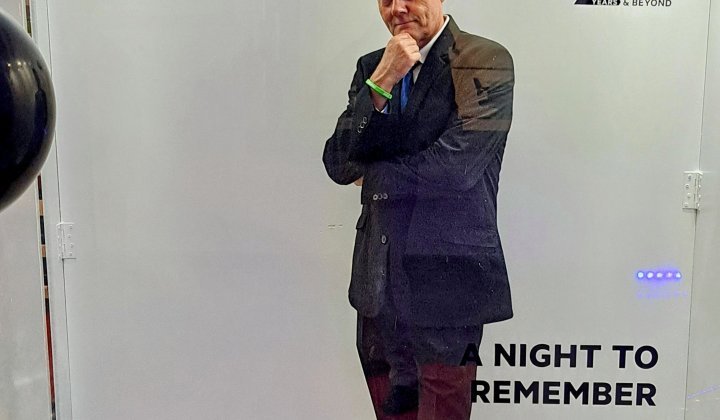Grappling with the velocity of change has been a challenge for the past five years. The pandemic simply proved to be a tipping point, fast forwarding “the future of work” from a scenario into to a reality. Businesses are now caught between the death of old ideas and the birth of the new.
What’s a death doula?
Many women have sought the services of a birth doula: a non-medical companion who provides emotional and physical support to mothers in the birthing process.
Death doulas work on the other end of the life spectrum. They are a non-medical emotional and spiritual support companion for a dying person and their families. They provide insight and advocacy about the dying process, preparation for what’s to come, and guidance and administrative support when grieving.
Death doula services became more widespread during the pandemic and helped people cope with the trauma of losing loved ones – and specifically to help people realise that death is a human experience, not just a medical diagnosis.
Becoming a death doula is a calling and I heeded that calling in 2022 when I trained to become an ‘end of life companion doula’.
The end of life as you know it
When training I learned that ‘end of life’ is not necessarily limited to death but can also cover the ‘end of life as you know it’ – for example: going through a divorce, having a new baby, emigrating to another country, losing a job, or even your business. In each situation there is an ending and a form of grief, whether it involves interpersonal relationships or a business. Author and grief expert David Kessler describes grief as “the change that you didn’t want”, which will resonate with any business owner in an era of constant disruption.
After my training I realised that what I have always done at Flux Trends has fundamentally been translating the death of old ideas and introducing the new for businesses. We are in the business of identifying disruptive business models and with disruption comes change, a sense of loss and an unacknowledged grieving process.
Applying some fundamental death doula principles to business today is therefore not that far-fetched.
Signs of terminal agitation
When dealing with a terminal patient, there are signs when the end is approaching – these are known as signs of terminal agitation.
In the business world there are always clear signs of terminal agitation, but in many cases business owners are so focused on operational issues, specifically when times are tough, that they don’t step back and assess the context of their business in a rapidly changing landscape. Some signs are just red flags and not urgent, but they can become urgent when ignored. These can include:
- Loss/decline in revenue but having to constantly work harder
- No change in customer demographics. This is not necessarily relevant, depending on the company and sector, but in terms of age, almost every company needs to factor in the impact of a cohort such as Gen Z (their means of communication, buying habits, and so on)
- Not adapting to technological change
- No change in operating systems for the past decade
- No changes in workforce management
- Loss of institutional memory, with senior staff leaving and not attracting new skills
- The absence of a speak-up culture
The death of the traditional work contract
The pandemic obliterated the almost century-old concept of a five-day, forty-hour work week as well as a location-based mindset that work (particularly for knowledge workers) could only happen in the company’s offices.
But apart from the change in physical and time-based dynamics, the traditional contract between employers and employees is being rapidly reconfigured as businesses are forced to become more human-centred.
Traditionally, businesses’ main goal for their employees has been to retain them. Employees were seen as assets in a purely transactional loyalty contract. Pay, benefits, and job security were exchanged for time and output, all of which were determined and dictated by the company.
This traditional understanding changed in the past couple of decades into an ‘engagement contract’, which was centered on achievement, camaraderie, and meaning. Employees were not just seen as assets to be optimised. Employers had to acknowledge that employee satisfaction was what retained talent and a whole industry emerged to measure engagement levels and improve on them.
Human resources departments were renamed with more empathetic and people-friendly titles such as ‘human capital management’, ‘talent management’, ‘employee experience manager’ and ‘people manager’. But in essence this was just plastering over a traditional corporate system that had not evolved.
In a post-pandemic era, and with the additional challenge of a new Gen Z workforce, a new ‘thrive contract’ is now emerging. A thrive contract is a more human-centric employment model that is anchored in purpose, equity, and impact. It is a far cry from the traditional work contract that viewed workers as assets. It takes into account a healthier, and more meaningful, work experience in exchange for commitment to an organisation – it is closer to a lifestyle contract, which ironically has always been the Gen Z mantra of “I don’t just want a job, I want a lifestyle.”
This thrive contract is the same shift in thinking that doulas advocate in a transitioning process: that death is not just a medical process but also a human one.
The importance of rituals
In life, and death, we use rituals to support our emotional states: to calm and ground us, and form connections with others.
Because rituals have a set sequence and routine, they are recognisable, repeatable, and predictable, and in times of change and disruption can instil a sense of calm and reassurance. Bringing rituals into the workplace may feel incongruous but in times of uncertainty and heightened concerns, research shows that such practices improve performance and assist with the process of change.
Simple workplace rituals can be as basic as blocking out time for coffee with colleagues once a week, starting Monday meetings sharing weekend activities before jumping into work-speak, or team celebrations each time a big project has been completed.
But workplace rituals shouldn’t be mandated ‘team-building exercises’. Employees, rather than management, should create their own. The objective is connectivity that builds trust and a routine that implies stability.
KEY TAKEAWAY
In an era of rapid change the disruptive process forces us to focus our energy on new beginnings: the ‘birthing’ of new ideas, systems, and processes. But endings demand our effort and attention too. We often gloss over the ripple effect of embracing the new: the human aspect loss. The loss of agency, the fear of redundancy, and the omnipresent fear of not keeping up with change are all markers of ‘the end of life as you know it’ and with it comes an unacknowledged grieving process.
Humanising businesses – now an essential business focus – has ensured that the mental well-being of a workforce has been brought to the fore: a management issue that was unthinkable a generation ago.
Acknowledgement of a grieving process is part of reassessing company culture. Reprioritising employee well-being has created a knock-on effect, forcing companies to rethink their ethos, values, and approach. Kind leadership, human-focused businesses, and adaptability to change are now paramount.
The new Gen Z workforce embodies this change. Managers who wonder why they can’t comply or submit to an old corporate system should rather be asking why the existing system has not evolved.




